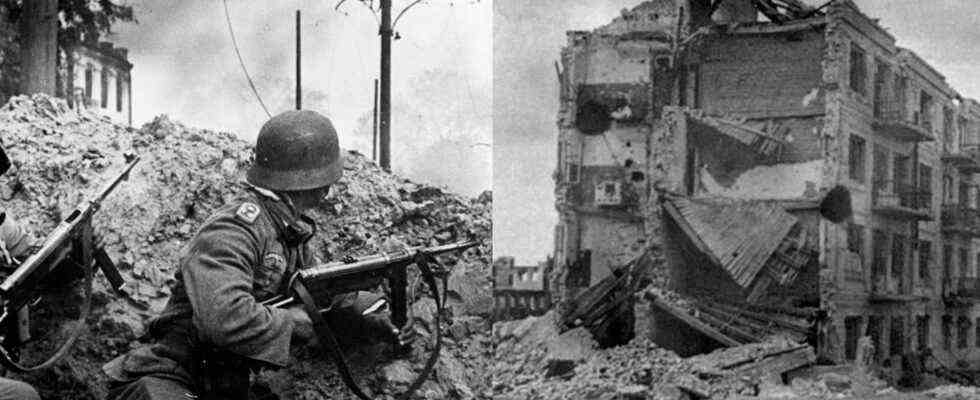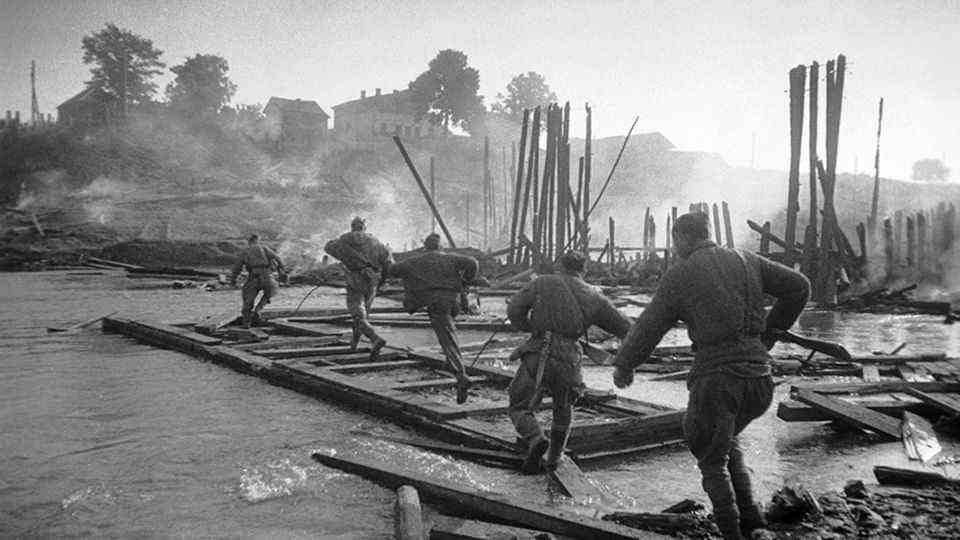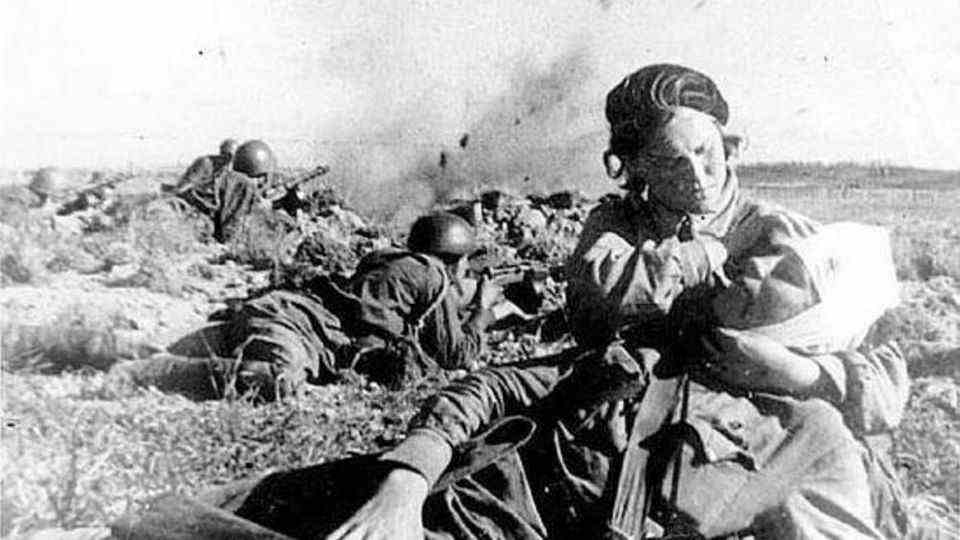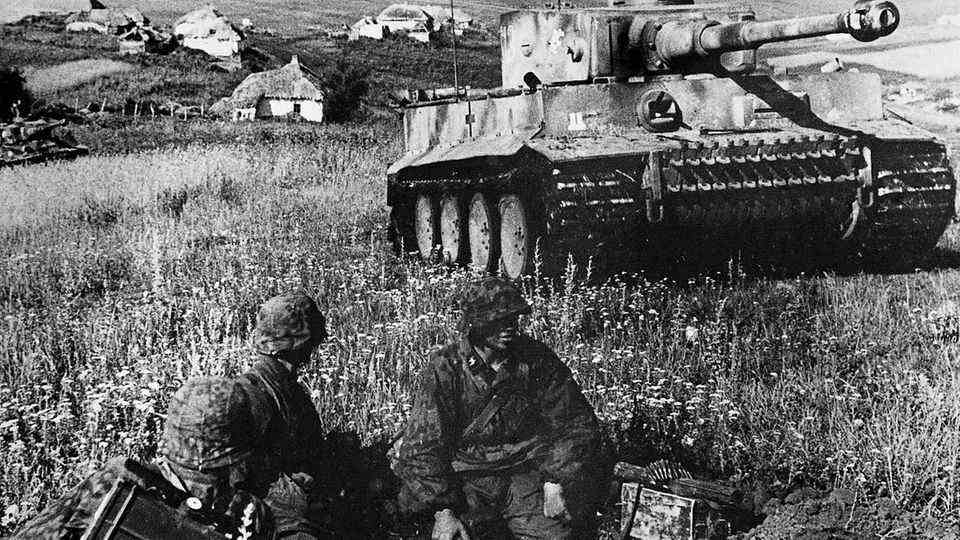Rat War in Stalingrad
Pavlov’s house – how a sergeant held up a German division for sixty days
German troops in Stalingrad, Pavlov’s home after the battle
© Commons
When the Germans entered the city on the Volga, a fight of unprecedented severity began. Sergeant Pavlov and his platoon fiercely defended a block of flats.
In September 1942 it looked as if the German 6th Army would finally crush Soviet resistance in Stalingrad. Commander-in-Chief General Paulus had once again received reinforcements, fresh divisions and assault engineers. They were supposed to push the Red Army out of the narrow strip it was still occupying and throw the Russians into the Volga (Read: “Hitler’s attempt to save Wehrmacht soldiers in Stalingrad failed miserably”).
The conquest of the city was much more difficult than the Germans had assumed. The Red Army troops were not allowed to retreat. To compensate for the superiority of the German air force and artillery, the Red Army soldiers moved extremely close to the Wehrmacht positions. Opponents were often only ten or twenty meters apart.
The Merciless Rat War
At that time, the Russian 62nd Army began to try a new tactic for urban warfare. They put together special shock squads. In them the veterans of the units were gathered. Because even the commander of the 62nd Army, Vasily Chuikov, had recognized that the Germans could not be defeated with untrained newcomers.
The men gave up their rifles and were armed with the Russian PPSh-41 submachine gun. Unlike the German Schmeisser MP, it never failed, and its drum magazine held 71 rounds. The group was given hand grenades and machine guns and, if possible, a light anti-tank gun. This could be pulled by the men and used to storm houses after first shooting a hole through the wall.
Since the submachine guns could not have a bayonet, the Russian soldiers discovered their fondness for sharpened spades, which continues to this day. The battle for the houses was fought man against man with knives and spades. The Germans dubbed this phase of the battle the “Rat War.”
The fight was merciless. While the soldiers fought for every floor in the houses upstairs, women and children sat in the cellars and in the sewers. They had not been evacuated on purpose so that the Red Army soldiers could fight more determinedly.
Bulwark in front of the Volga bank
And most of all the rat war raged around “Pavlov’s” house. Today only a fragment of the wall of the four-storey block of flats can be seen. On the night of September 23, a group of the 13th Guards Rifle Division advanced towards the house. It sat between the German positions, surveying the surrounding area and protecting the bank of the Volga, which was still held by the Soviets.
The unit managed to take the building and drive out the German garrison. But of the 30 men on the train, only four survived. The lieutenant was dead, all the corporals were dead, and Sergeant Pavlov was now senior. There were also ten civilians locked in the basement. Later, Pavlov’s men were reinforced by 25 men under Lieutenant Ivan Afanassiev.
For sixty days they held the building against furious attacks from the German 295th Infantry Division and parts of the 14th Panzer Division. From the roof, the Russians are said to have succeeded in shooting down German tanks with a so-called anti-tank rifle. This PTRS was in use until the end of the war, but could not really penetrate the armor of the German tanks, but from the roof of the house one could fire at the poorly protected top of the tank. Conversely, the angle of inclination of the tubes of the German tanks was too small to reach the positions at the top of the house.
Later in the war, the Soviets developed special weapons against such fortified houses. They mounted shortened heavy guns on small tugboats and fired huge mines straight into houses, the pressure of the explosion then destroying everything. But in 1942 the Germans did not have such resources.
The Germans had to cross an open space
Barbed wire and mines were laid around the house and deep foxholes dug in the rubble. In order to supply the upstream position, the Russians drove underground tunnels.
The corpses of the Germans were decomposing all over the square, it was impossible to recover the dead because of the snipers. The smoke from the fires and the explosions of the projectiles were accompanied by eerie music day and night. Pavlov’s men found an old gramophone in the building with only one record on it and played it non-stop.
Despite their best efforts, the Germans did not manage to drive the Russians out of the house for two months. With each attack they had to cross the open square of “January 9th”. As confusing as the landscape of rubble on the ground was, the Germans could easily be fired at from the upper floors with machine guns. At night, the Red Army soldiers had to crawl out of the house and pull the corpses away from the entrances and windows to get a clear field of fire again. Because of their losses, the German leadership overestimated the manpower of the crew by far. Vasily Chuikov later said that the Germans lost more men trying to take Pavlov’s house than they did in capturing Paris.
An amazing number of men from the first crew survived the battle, even the ten civilians were saved. Pavlov and some of his men were awarded “Hero of the Soviet Union”. The fact that a mere sergeant clung to Stalin’s “Don’t step back” order and stopped an entire German division was intended to boost morale in the country. Pavlov survived the war and died in 1981.
Also read:
Hitler’s attempt to rescue the Wehrmacht soldiers in Stalingrad failed miserably
Rzhev 1942 – why the “meat grinder” of the Eastern Front was long forgotten
Anger about Russian war film: heroic deeds that did not exist
Operation Bagration – this offensive broke the backbone of the German Wehrmacht






